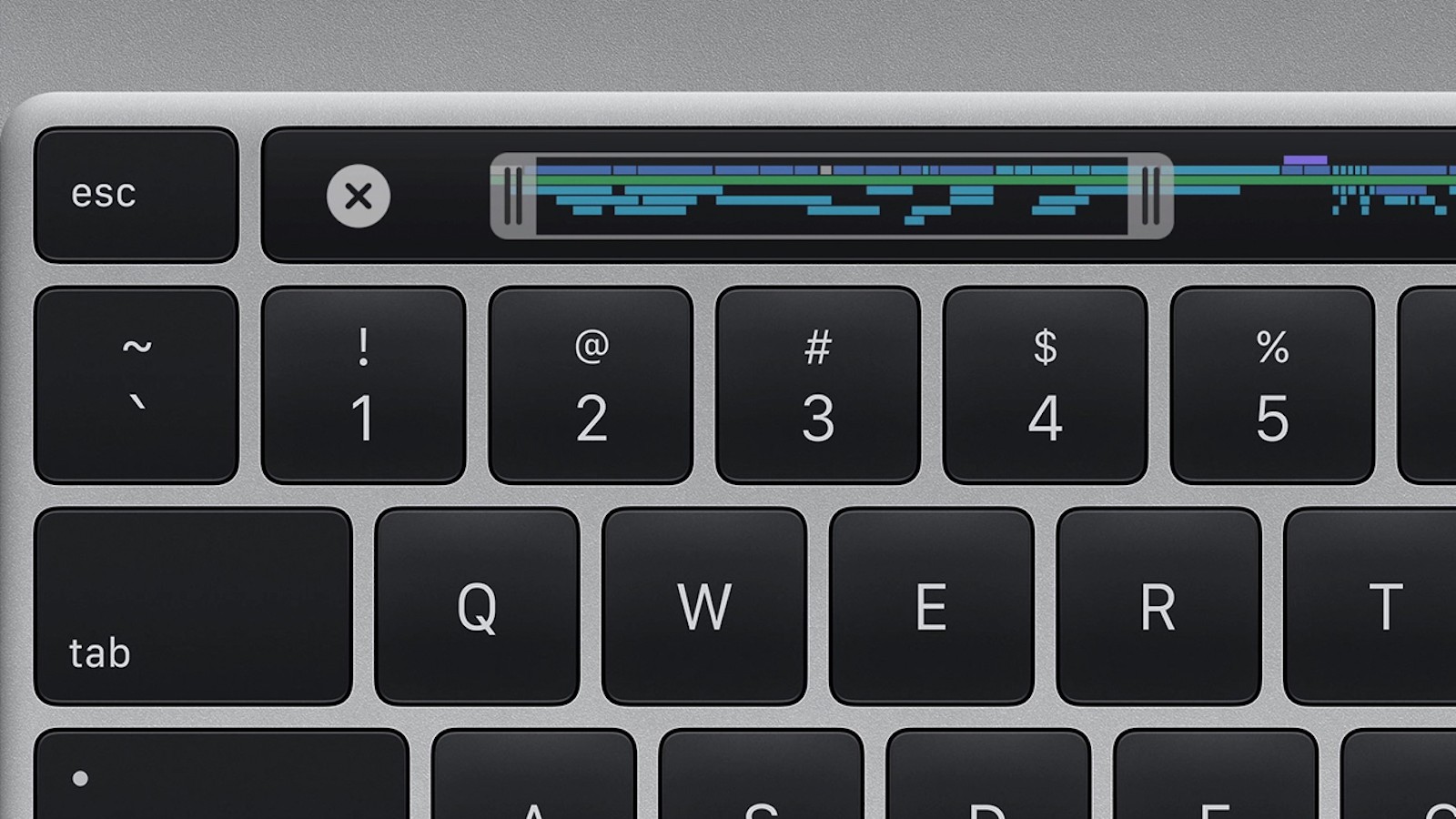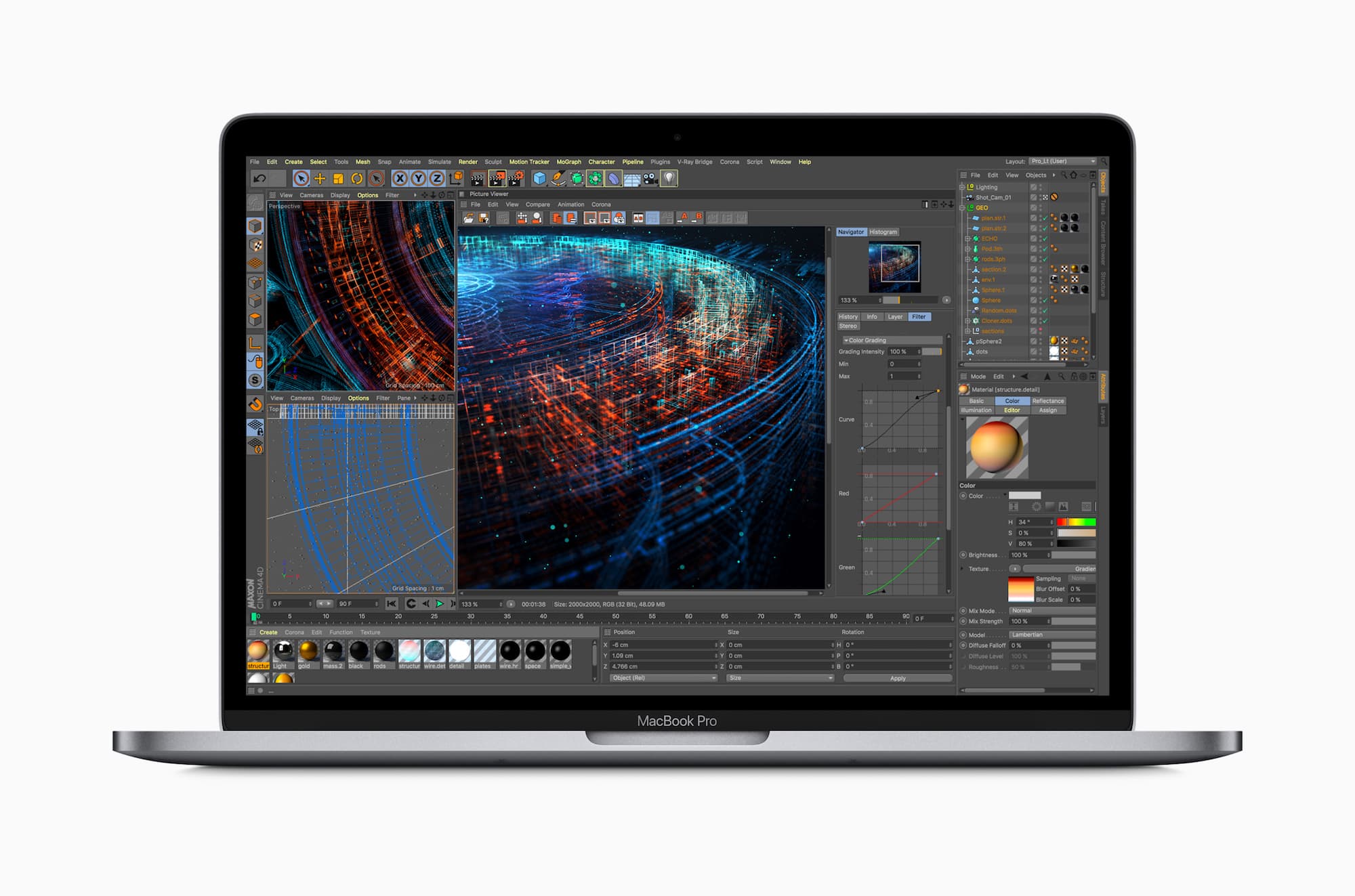The latest MacBook devices are extremely powerful machines for their size and weight. But recent versions of the MacBook Pro and MacBook Air could have a problem: their keyboard.
If you’re in the market for one and you have the cash to buy it, Apple’s notebooks are a solid choice for many types of professional and creative work. However, there are a couple of issues that you should be aware of.
Related:
For example, you may have heard about the so-called Flexgate controversy or the sticky key issue caused by the butterfly keyboard. Flexgate, by all accounts, hasn’t impacted 2018 MacBook Pro models because they aren’t old enough. And it might not affect them at all, thanks to a small change that Apple made which could prevent the root cause of the issue (via iFixit).
But the butterfly keyboard issue is another matter, and a bit more complicated to explain. Here’s what you need to know about it.

- Apple introduced the butterfly mechanism with its 12-inch MacBook in 2015. Touting the new hardware technology onstage, SVP of Worldwide Marketing Phil Schiller characterized the keyboard as 'much.
- Apple’s newest MacBook Pros, which are being announced today and include significant bumps in power and performance, are still using Apple’s third-generation “butterfly” keyboard.
Contents
- 1 The butterfly keyboard
- 2 Some recommendations

May 26, 2019.T he 2015 first-gen 12-inch MacBook was the first keyboard with a Butterfly mechanism from Apple. All new MacBooks now come with keyboards with the butterfly mechanism. All new MacBooks now come. May 04, 2020 The era of the butterfly keyboard kicked off with 2015’s 12-inch MacBook.It was just called MacBook (no “Air” or “Pro” modifier), and it was heralded as a new kind of laptop for Apple. Apple knows (and has publicly acknowledged) that reliability issues exist for these butterfly keyboard designs. Apple needs to admit that the issue is much broader than it previously has. “The vast majority of Mac notebook customers are having a positive experience with the new keyboard” is not necessarily lying, but it does seem to be.
The butterfly keyboard
Apple’s butterfly keyboard design is contentious. Some people love it, some people hate it, and some people really hate it when it fails. Here’s what you should know.
Keyboard design
The first thing to note is key travel. It’s a lot different than most standard keyboards — even the ones that Apple makes. It’ll feel quite a lot more “shallow” than other laptop keyboards.
While the key travel isn’t for everyone, some people do genuinely enjoy it. The keycaps are a bit larger and people report typing slightly faster on them.
Loudness, of course, is kind of an issue for some. But newer MacBook Air and MacBook Pro models have a new silicon membrane which dampens the sound a bit (it also helps mitigate dust issues, which we’ll get to shortly).
All in all, we suggest trying one out at an Apple Store near you. But know that it takes a bit of time to get used to.
Sticky key issue
Of course, the much bigger issue is when the keyboard fails. In newer MacBook Pro models, some users experience “sticky” keys in which single key presses register as two presses.
Sometimes, other issues — like non-registered presses — are reported.
The main thing to note is that this will not affect every MacBook Pro model out there. Some users have never experienced the sticky key issues.
It just seems that way because people who are happy with their MacBook Pro experience are not going to take to the internet to complain about it. Of course, when it does happen, it’s infuriating. And it’s simply not acceptable for a laptop that costs upwards of $2,000 to have such an issue.
It isn’t readily clear what causes it, either. Some people point to dust. On that note, Apple has implemented a silicone membrane that should help mitigate (but not entirely solve) dust issues.
Others suggest that it could be heat-related. The MacBook Pro form factor isn’t all that well-suited to the kind of powerhouse processing that it’s made for. Over time, theoretically, heat could warp and damage the butterfly mechanism, causing problems down the road.
In any case, the sticky key issue is widespread enough to be of concern. So it’s something to keep in mind.
Some recommendations
If you’re in the market for a new Mac notebook, here are a couple of recommendations that you should keep in mind.
Get newer MacBook models
It’s worth noting that Apple has continually tried to improve the butterfly keyboard. In its most recent MacBook Pro and MacBook Air models released in 2019, Apple has implemented “new materials” that will ostensibly cut down on the number of keyboard failures.
Of course, it’s too early in those devices’ life cycle to tell whether or not the new materials actually fix the issue. Still, if you’re in the market for a new Apple laptop, we recommend going with the latest models.
Don’t worry too much about repairs
Apple has launched a keyboard repair program that covers basically every device with a butterfly keyboard. Under the program, Apple will repair or replace any keyboard free-of-charge.
That’s obviously a boon if you already have a butterfly keyboard. But if you’re considering on buying a current MacBook Pro or MacBook Air model, it’s a bit of extra peace of mind (especially if you don’t want to purchase AppleCare+).
The program covers all butterfly keyboard-equipped Mac notebooks for up to four years after their original purchase date.
Maybe wait it out?
There are a variety of rumors suggesting that Apple is going to release a new MacBook Pro this year with an “all-new design.” That includes a new keyboard based on a scissor-switch mechanism.
Since scissor-swtich keyboards are, historically, pretty reliable, it’s likely that the 2019 MacBook Pro could completely do away with any sort of sticky key issue. If you’re particularly concerned about the problem happening to you, it may be worth waiting it out.
More general tips
- Try to get a 2019 MacBook Pro or 2019 MacBook Air, if you can afford it. Those models have an upgraded butterfly keyboard that should mitigate how common the sticky keyboard issue is.
- AppleCare+ is highly recommended if you can afford it. If your 2018 MacBook Pro experiences butterfly keyboard issues, it could save you quite a bit of money on repairs.
- If you get a MacBook on the secondary market, keep in mind that Apple’s repair program only covers it for four years after its original purchase date.
- Keep your desk and workspace as clean as possible.
- If you experiencing sticky key issues on a butterfly keyboard, don’t panic. Follow our previous guide on cleaning your MacBook Pro keyboard. But make sure not to clean your Mac keyboard too frequently, since this may cause issues.
- Some MacBook Pro users have reported success with silicone keyboard covers like this one. To be clear, this hasn’t been proven to completely prevent sticky key problems. As an additional note, you’ll want to make sure the keyboard cover isn’t imprinting on your MacBook’s display, either.
- Install Unshaky. It’s an app that can alleviate some of the symptoms of the sticky key issue through software.
- If keyboard issues persist after a cleaning, take the device to a Genius Bar or an Apple Authorized Service Provider.
We hope that you found these tips useful. Please let us know in the comments below if you have any questions.
Mike is a freelance journalist from San Diego, California.
While he primarily covers Apple and consumer technology, he has past experience writing about public safety, local government, and education for a variety of publications.
He’s worn quite a few hats in the journalism field, including writer, editor, and news designer.
Related Posts:
Apple has determined that a small percentage of the keyboards in certain MacBook, MacBook Air, and MacBook Pro models may exhibit one or more of the following behaviors:
- Letters or characters repeat unexpectedly
- Letters or characters do not appear
- Key(s) feel 'sticky' or do not respond in a consistent manner
Apple or an Apple Authorized Service Provider will service eligible MacBook, MacBook Air, and MacBook Pro keyboards, free of charge. The type of service will be determined after the keyboard is examined and may involve the replacement of one or more keys or the whole keyboard.
To identify your computer's model and to see if it is eligible for this program, choose Apple () menu > About This Mac. Eligible models are listed below.
- MacBook (Retina, 12-inch, Early 2015)
- MacBook (Retina, 12-inch, Early 2016)
- MacBook (Retina, 12-inch, 2017)
- MacBook Air (Retina, 13-inch, 2018)
- MacBook Air (Retina, 13-inch, 2019)
- MacBook Pro (13-inch, 2016, Two Thunderbolt 3 Ports)
- MacBook Pro (13-inch, 2017, Two Thunderbolt 3 Ports)
- MacBook Pro (13-inch, 2019, Two Thunderbolt 3 ports)
- MacBook Pro (13-inch, 2016, Four Thunderbolt 3 Ports)
- MacBook Pro (13-inch, 2017, Four Thunderbolt 3 Ports)
- MacBook Pro (15-inch, 2016)
- MacBook Pro (15-inch, 2017)
- MacBook Pro (13-inch, 2018, Four Thunderbolt 3 Ports)
- MacBook Pro (15-inch, 2018)
- MacBook Pro (13-inch, 2019, Four Thunderbolt 3 Ports)
- MacBook Pro (15-inch, 2019)

Note: No other Mac notebook models are part of this program.
Please choose one of the options below for service. Your Mac notebook will be examined prior to any service to verify that it is eligible for this program.
The type of service will be determined after the keyboard is examined and may involve the replacement of one or more keys or the whole keyboard. The service turn-around time may vary depending upon the type of service and availability of replacement parts.
- Find an Apple Authorized Service Provider.
- Make an appointment at an Apple Retail Store.
- Mail in your device to the Apple Repair Center.
To prepare your unit for service, please backup your data.
Note: If your MacBook, MacBook Air, or MacBook Pro has any damage which impairs the service, that issue will need to be repaired first. In some cases, there may be a cost associated with the repair.
This worldwide Apple program does not extend the standard warranty coverage of your Mac notebook.
If you believe your Mac notebook was affected by this issue, and you paid to have your keyboard repaired, you can contact Apple about a refund.
Which Macbooks Have Butterfly Keyboard
The program covers eligible MacBook, MacBook Air, and MacBook Pro models for 4 years after the first retail sale of the unit.